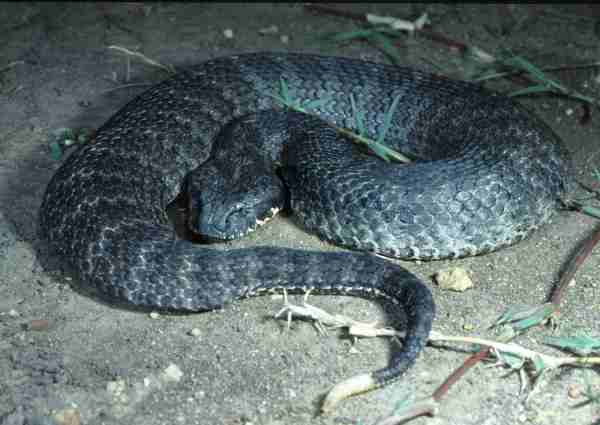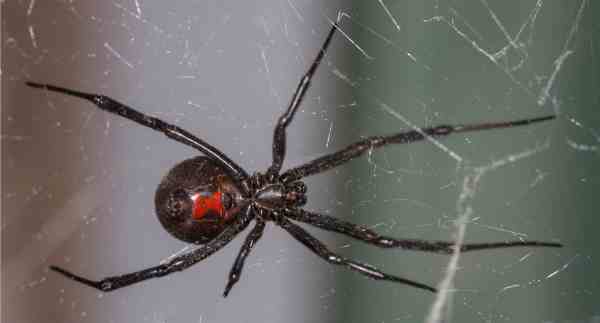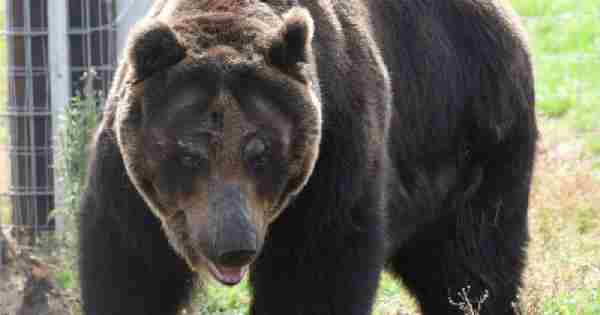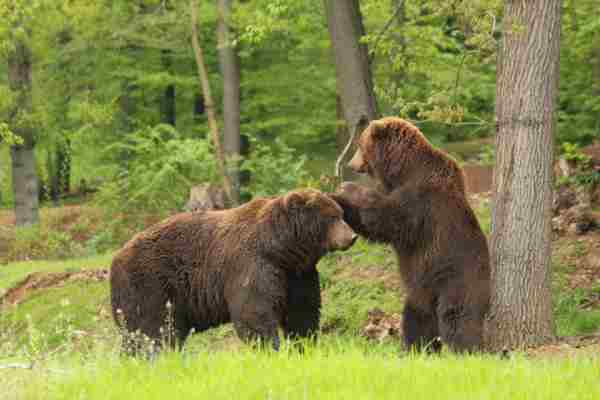Nestled along the sparkling Adriatic coast and adorned with picturesque landscapes, Croatia is a dream destination for nature enthusiasts. However, beyond its stunning beauty lies a realm inhabited by some of Europe’s most enigmatic and potentially dangerous wildlife. In this article, we embark on an adventure to uncover the hidden world of dangerous animals in Croatia.
From the venomous vipers lurking in its lush forests to the stealthy brown bears patrolling the Dinaric Alps, Croatia’s untamed wilderness harbors a diverse range of creatures that command both respect and caution. While most travelers flock to the country for its charming medieval towns and azure waters, understanding the local wildlife adds a thrilling dimension to the Croatian experience.
Join us as we navigate through the Dangerous Animals in Croatia to learn about the extraordinary creatures that call this land home, and discover the essential tips to ensure a safe encounter with these captivating but potentially perilous animals. Croatia’s wilderness may be perilous, but with knowledge and respect, you can embrace its wild side while staying out of harm’s way.
Croatia’s Diverse Natural Landscape:
Croatia boasts one of the most diverse natural landscapes in Europe, ranging from the rugged, snow-capped peaks of the Dinaric Alps in the interior to the sun-soaked Adriatic coastline fringed with hundreds of islands. This incredible variety of terrain provides a rich tapestry for wildlife to thrive. The dense and pristine forests of Croatia, especially in national parks like Plitvice Lakes and Krka, offer shelter to numerous animal species.
Meanwhile, the karst caves and underground rivers that lace the country’s limestone bedrock create unique habitats for cave-dwelling creatures. Croatia’s varied topography invites adventure seekers to explore its canyons, cliffs, and mountains, but it also means encountering a diverse array of wildlife, some of which can be potentially dangerous. This diversity in landscapes and ecosystems is what makes Croatia a natural wonderland and a unique destination for both wildlife enthusiasts and outdoor enthusiasts.
The Presence of Wildlife in Croatia:
Wildlife in Croatia is both abundant and diverse, with a mixture of iconic European species and elusive creatures hidden deep within its forests. From brown bears, wolves, and lynx in the mountainous regions to chamois and ibex scaling the steep cliffs, Croatia’s wild residents thrive in its protected national parks and reserves. Along its pristine coastline and islands, marine life, including dolphins and loggerhead sea turtles, can be spotted in their natural habitats.
Additionally, the rich avian diversity attracts birdwatchers from around the world, with species like the griffon vulture and imperial eagle soaring in the skies. However, it’s essential for visitors to be aware of the potential dangers posed by some of these animals, particularly when venturing off the beaten path. Understanding the coexistence of humans and wildlife is not only crucial for conservation but also for ensuring safe and memorable encounters with the remarkable fauna that calls Croatia home.
The European Adder (Vipera berus):

The European Adder, also known as the common viper, is a venomous snake that finds its home in Croatia’s woodlands and grasslands. These elusive reptiles, characterized by their distinctive zigzag pattern and V-shaped markings on their heads, are a part of the country’s natural landscape. While they play a vital role in maintaining ecological balance by controlling rodent populations, their venomous bite can pose a threat to humans. Therefore, when exploring Croatia’s wilderness, hikers and nature enthusiasts should exercise caution and remain aware of their surroundings to avoid unintentional encounters with these fascinating but potentially dangerous creatures.
Nose-horned Viper (Vipera ammodytes):

The Nose-horned Viper, with its unique appearance and potent venom, is another native snake species found in Croatia’s wilder regions. This viper’s presence underscores the importance of understanding the country’s wildlife, especially if you plan to venture into remote areas. Respecting their habitat and keeping a safe distance is paramount to both your safety and the conservation of these remarkable reptiles.
European Hornet (Vespa crabro):

The European Hornet is the largest hornet species in Europe, and it can be found in Croatia’s woodlands and gardens. Although they are less aggressive than their smaller relatives, it’s still important to exercise caution and avoid provoking them. Learning to coexist peacefully with these fascinating insects is crucial for maintaining the ecological balance within Croatia’s diverse natural landscapes.
Mediterranean Black Widow Spider (Latrodectus tredecimguttatus):

The Mediterranean Black Widow Spider, with its distinctive black body adorned with red markings, resides in Croatia’s warm and sunny climates. While their venom can be potent, human encounters with these spiders are rare. Nevertheless, it’s advisable to exercise caution when exploring Croatia’s natural beauty, particularly in areas where these arachnids are known to inhabit.
Common Stingray (Dasyatis pastinaca):

Along Croatia’s stunning coastline and crystal-clear waters, you may encounter the Common Stingray. These graceful creatures are generally not dangerous to humans unless provoked. Observing them from a respectful distance while snorkeling or diving allows for safe and awe-inspiring encounters with these marine residents.
Weever Fish (Trachinus draco):

The Weever Fish, known for its venomous spines, lurks in the sandy shallows of the Adriatic Sea. While encounters with this fish are rare, beachgoers should exercise caution when wading in shallow waters to avoid stepping on one. Knowing about these hidden dangers is essential for a safe and enjoyable visit to Croatia’s beautiful beaches.
Brown Bears (Ursus arctos):

Croatia’s dense forests and mountainous regions are home to Brown Bears. These majestic creatures are a symbol of the country’s wild beauty. While encounters with bears are infrequent, understanding their behavior and following proper safety guidelines is essential when hiking or camping in their territory.
Wild Boars (Sus scrofa):

Wild Boars are common in Croatia’s woodlands and forests. While they are generally timid, they can be unpredictable when provoked or cornered. It’s important to exercise caution and avoid feeding or approaching these animals, as their behavior can change rapidly.
European Fire Salamander (Salamandra salamandra):

The European Fire Salamander is an amphibian that can be found in Croatia’s damp forests and caves. Their striking black and yellow coloring makes them fascinating to encounter. However, like all wildlife, it’s best to observe them from a distance to ensure their well-being and yours.
European Green Lizard (Lacerta viridis):

The European Green Lizard, with its vibrant green coloration, is a common sight in Croatia’s sunny meadows and woodlands. These gentle reptiles are harmless to humans and play a role in maintaining ecological balance by controlling insect populations. Observing them from a distance and respecting their natural habitat allows for a harmonious coexistence with these enchanting creatures.
Final Words
In conclusion, Croatia’s natural beauty extends far beyond its stunning landscapes and coastal vistas; it encompasses a diverse tapestry of wildlife that calls this country home. From the venomous snakes that quietly slither through its woodlands to the majestic bears roaming its mountains, and the intriguing creatures inhabiting its waters, Croatia’s wildlife adds a thrilling dimension to any visit.
While encounters with these animals are rare and often safe when approached with caution and respect for their habitats, it is essential for visitors to remain informed about the potential risks and behaviors of the local wildlife. By doing so, we can coexist harmoniously with these remarkable creatures while ensuring both our safety and the conservation of these vital species.
So, whether you’re a nature enthusiast, an adventure seeker, or simply someone who appreciates the wonders of the natural world, Croatia offers a unique opportunity to connect with its wild side. Armed with knowledge and respect, you can explore this enchanting country and its diverse wildlife, forging memories that will last a lifetime while contributing to the preservation of Croatia’s rich biodiversity.
Reference:
- https://www.ncbi.nlm.nih.gov/pmc/articles/PMC9536165/
- https://www.prijatelji-zivotinja.hr/index.en.php?id=2322
- https://www.gov.uk/foreign-travel-advice/croatia/safety-and-security
A motivated philosophy graduate and student of wildlife conservation with a deep interest in human-wildlife relationships, including wildlife communication, environmental education, and conservation anthropology. Offers strong interpersonal, research, writing, and creativity skills.










